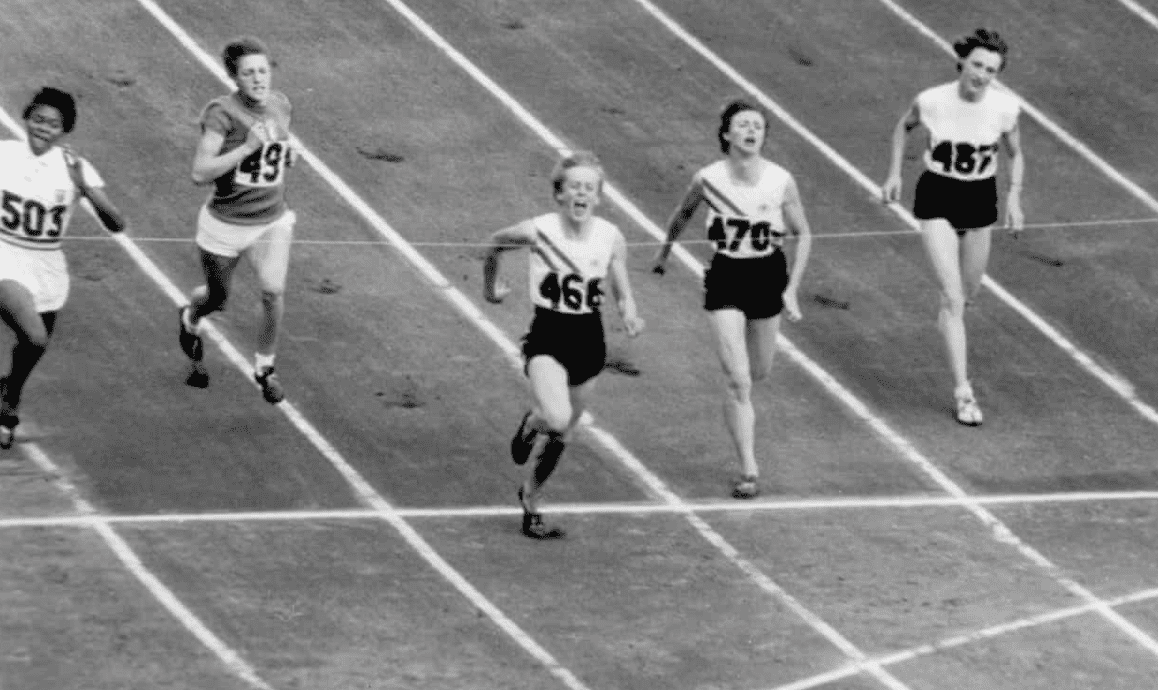Athletics is not a sport central to our country’s identity in the way cricket and the AFL are. Yet from the 1950’s up to the early 70’s Australian athletes were powerhouses on the track. Marjorie Jackson, nicknamed the ‘Lithgow Flash’, won two Olympic gold medals in 1952 (for the 100m and 200m tracks). Australia’s ‘Golden Girl’ Betty Cuthbert, arguably our greatest sprinter, dominated the world scene across the 100m, 200m and 400m tracks. Herb Elliot, Ron Clarke, Ralph Doubell and John Landy rank among the greatest distance runners to have ever set foot on a track, breaking 23 world records (17 of those belonging to Clarke alone) in events from the 800m to 10,000m.
These athletes’ performances on the track, their back stories and “never say die” attitudes cement Australian athletics into the Australian sporting psyche. National heroes and household names were created in these three decades.
Since then, Australia’s success has been limited to a few stars such as Dani Stevens (discus), Steve Hooker (pole vault), Sally Pearson, Debbie Flintoff-King (400m hurdles), Cathy Freeman and Jana Pittman (400m). However, we seem to be on the horizon of a new period of athletic success judged by the recent World Championships.
Over the last 14 years, we’ve seen increasing numbers of athletes achieving Olympic and World qualification marks. Australia has gone from sending a team of 40 to Beijing 2008, to a team of 63 in Tokyo 2021. This is also shown in the size of our World Championship team, which jumped from 43 to 59 in the decade from 2009 to 2019.
Most notable has been the considerable improvements since 2016, attributed to a post-Rio bump. According to a statistical analysis I conducted of World Championship and Olympics results, although the number of medaling events was in line with previous performances at the Games, an impressive 55 per cent of Australian athletes made their final (up from 46 and 43 per cent the two Games prior). Changes in the trajectory of given sports can often be traced to past Games, where particularly impressive performances tend to raise the profile of a sport and attract new talent and investment from government and sponsors.
However, in Tokyo, Australia fell short of replicating the success in Rio, with the proportion of athletes making a final dipping back to 41 per cent. Yet this is not the only metric of success, as Australia also sent its largest ever team to an overseas Olympics – many of whom are at the beginning of their careers. These talents have seen our presence grow on the international circuit, with Australian team sizes increasing by half in comparison to the 2008/09 Olympics and Worlds to the 2019/21 events.
The call for optimism is most apparent at the national level. In the last 7 years, 34 outdoor national records have been broken (some equalled) compared to 19 outdoor national records in the period before 2016 – approximately an 80 per cent increase.
So who are the faces behind the resurgence in Australian athletics?
Kelsey-Lee Barber, remembered for her incredible last-gasp throw that captured the Bronze in her javelin final in Tokyo, is currently Australia’s best female thrower – and only the 4th Australian woman to win an Olympic medal in a throwing discipline. She will be defending her 2019 World Championship title later this year in Oregon.
Nicola McDermott, a high jumping Tokyo Silver medalist, is the only Australian woman to surpass the magical 2m mark. McDermott jumped into Australian hearts by making it a habit of writing down a rating out of 10 in her journal after every jump.
Stewart McSweyn is currently our best long-distance runner, clocking a mile in 3 min and 48.37 sec, and breaking an Australian record set since 2005. Despite a “disappointing” 7th place finish in his 1500m final in Tokyo, McSweyn won three major international meets in 2021 and currently ranks third in the world behind a Kenyan and Norwegian, who have had a hold on middle-distance events for the past half decade.
Michael Dooley, a coach who has trained three Olympians, suspects there are a few factors behind our recent spike in athletics performances. The first he believes is an increase in the number of coaches who have had opportunities to go overseas and learn from some of the very best sprint, distance, jumping and throwing coaches the sport has to offer. This rings true with high jumper Nicola McDermott, who went along with her coach to Europe in 2018 to compete for a season and came back knowing that Nicola’s technique would need to be reworked if she was going to challenge the world’s best. She is now an Olympic silver medallist. The incorporation of new techniques into elite athletics programs is vastly improving the overall quality of Australian coaching.
Coach Dooley also believes that former Australian athletes, many of whom competed at the international level in the 90s and 2000s, have now moved into coaching, and in doing so have brought a wealth of knowledge and experience from their own time in the sport that is taking today’s athletes to new heights.
Athletics has a rich and long history in Australia, one that is entwined with stories of success, hard work and redemption. While the sport is yet to reach heights similar to that it experienced in the mid 20th century, there is much excitement now following today’s crop of elite athletes, a growing and ever improving group striving to reinstate Australia on the world athletics map.
With the demands of modern sport and the intensity of training at the top level, all for incredibly modest remuneration, these athletes are already legends in their own right. So here’s to their recent successes and the promise they hold for the future of Australian athletics as a whole.





